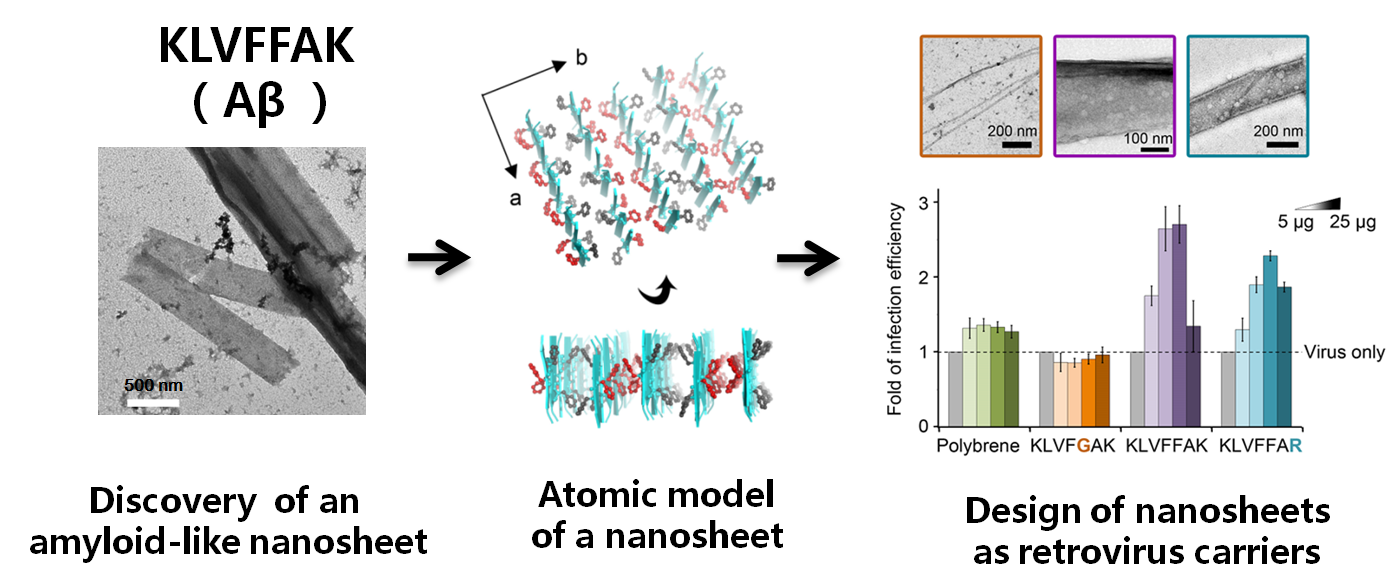The amyloid assembly of proteins/peptides features highly ordered hierarchical structure. Amyloid formation is closely associated with a variety of devastating human diseases including Alzheimer's, ALS and Parkinson's. On the other hand, fundamental biological processes take advantage of amyloid assembly for long-term memory persistence, hormone storage, and necroptosis. Given the favorable properties including high thermal stability and stiffness, biocompatibility, and controllable self-assembly, amyloid is acquiring utility as a new class of biological nanomaterials. Recently, the Liu lab from the Interdisciplinary Research Center on Biology and Chemistry, Shanghai Institute of Organic Chemistry, Chinese Academy of Sciences, led an collaboration of scientists from Shanghai Institute of Applied Physics and Fudan University reporting the discovery of a novel amyloid-like architecture, termed as “amyloid-like nanosheet”. They further on designed and applied the nanosheet in retrovirus transduction. The work was published in Proc Natl Acad Sci USA this month. 
In this work, Liu and co-workers discovered a previously unreported giant nanosheet structure. The structure is self-assembled by an amyloidogenic peptide of Abeta which forms amyloid aggregates found in the brains of Alzheimer’s patients. The authors characterized the structure of the nanosheet by multiple approaches and built an atomic model. Based on the structural model, they designed and utilized the nanosheet as a highly effective enhancer for retrovirus transduction. A series of artificial peptides capable of forming amyloid-like nanosheets were further designed and characterized. Their work shows the potential of amyloid-like nanosheet as a robust platform for integrating different functionalities, and provides a general approach for structure-based design of amyloid-like bio-nanomaterials. This work was supported by the 1000 Talents Program of China, the State High-Tech Development Plan (the "863 Program") Award, National Natural Science Foundations of China, and China Postdoctoral Science Foundation. |


